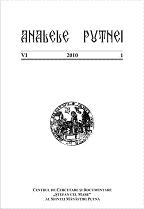Schiturile şi metoacele Mănăstirii Putna
The Sketes and Metochia of the Putna Monastery
Author(s): Ieromonah Marcu Petcu Subject(s): History
Published by: Centrul de cercetare şi documentare ŞTEFAN CEL MARE
Keywords: metochion; monastery; Putna; skete; submitted monasteries
Summary/Abstract: Ever since its origins the Putna Monastery possessed, by princely donations, various metochia together with their neighbouring villages. The fortresses and the cities were important commercial points, which could substantially sponsor the budget of the mother-monastery. Consequently, over the time Putna had metochia in the Hotin citadel and in the city of Siret, the latter metochion having a purely economical character. A special instance of the relation between a monastery and its metochion is represented by the strong connection between the Putna and the Moisei monasteries during the 18th century. At that time, Putna supported both spiritually and economically the Moisei monastery, in the context of the Uniatism that threatened the unity of the Orthodox faith and of the Romanian nation in Maramureş. The Sineşti and Dumbrăveni sketes and the monastery of Saint Onuphrius–Siret are models of the harmonious intertwining between the spiritual and economical life. They were not only places that brought profit to the monastery but also places where the monks from the big lavra could withdraw in order to find peace and stillness. Among the sketes studied by the author in this paper, only Plosca is a classical hermitage, being founded out of purely spiritual reasons.
Journal: Analele Putnei
- Issue Year: 2010
- Issue No: 1
- Page Range: 119-134
- Page Count: 16
- Language: Romanian
- Content File-PDF

